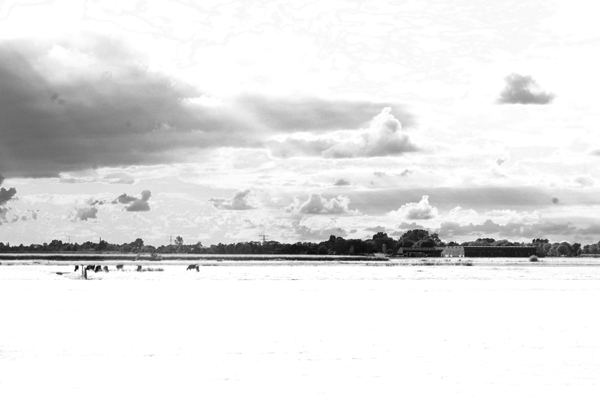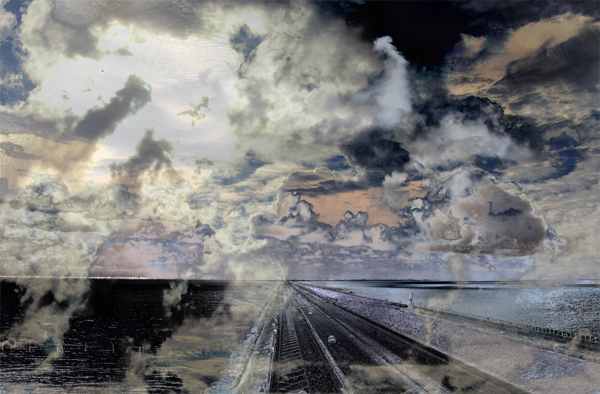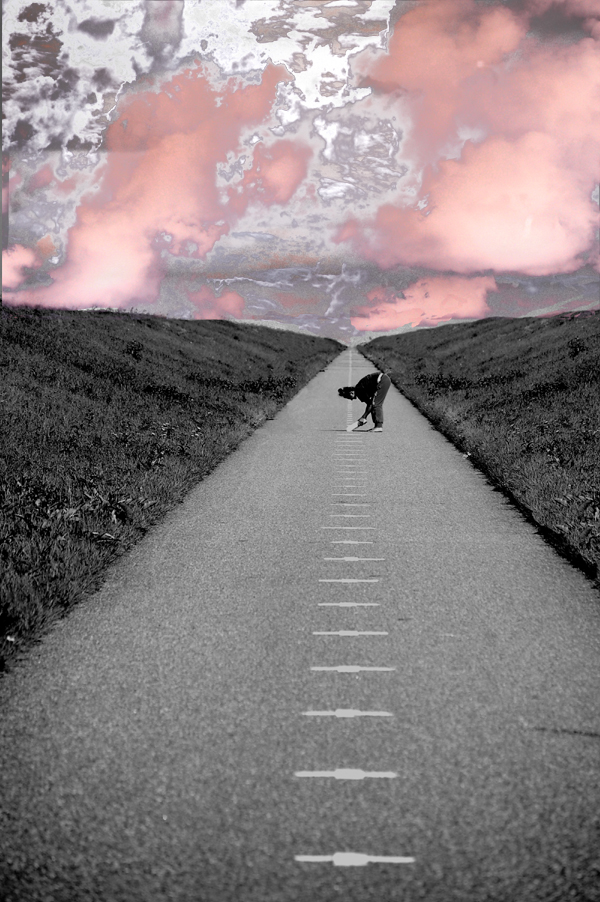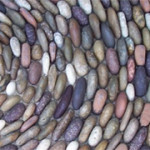Schemes enable us to play games, for they enable us to relate what we are…
Immersed perception
Posted by Everdien on 9/22/11 • Categorized as All posts
Looking at the ever-present horizon in the Afsluitdijk pictures reminded me of part of my graduation essay – the part where I deal with perception
” It is difficult to perceive perception – we are bound by and to our position in time and space. To position ourselves, we have to do something that is by its nature contrary: we must both see ourselves in the here and now and abstract ourselves from it. Abstraction in time is handled by the narrative of identity: the story of who we are, where we came from and where we think to go. Abstraction in space is handled by the mental map we construct, depicting our surroundings and placing ourselves on it so as to position ourselves in respect to other people, objects and landscapes.”
A first mode of perception is individual perception: where am I situated, what does my environment look like, and what actions am I asked to or able to perform. This is an inside-out perception, where the ‘I’ is situated behind the eyes looking out through them at ‘it’s’ surroundings. The first collage I made expresses individual perception:

A second mode of perception is meta-perception: the individual becomes part of a larger system. This is ‘overview’ perception or ‘bird’s eye’ perception – we place ourselves in the landscape, looking outside-in. The next collages begin to address this view:
:

The third and most interesting mode of perception lies inbetween: immersed perception. Individual perception and meta-perception merge to a point where one is not aware of either of them any more. The pleasure of playing a game lies in entering this mental state: in responding automatically, processing information effortlessly, become an instantaneous decision making unit, walking on a path chosen without self-conscious thought.
Brilliant Orange: “All systems should be familiarised, one with the other, in such a way that their combined impact and interaction can be appreciated as a single complex system’, said key structuralist Aldo van Eyck, talking about modern cities but sounding uncannily as though he might be laying down a template for the Ajax football system.
”The Netherlands has been one of the world’s most distinctive and sophisticated football cultures. From the birth of Total Football in the sixties, through two decades of World Cup near misses to the exiles who remade clubs like AC Milan, Barcelona, Arsenal and Chelsea in their own image, the Dutch have often been dazzlingly original and influential. The elements of their style (exquisite skills, adventurous attacking tactics, a unique blend of individual creativity and teamwork, weird patterns of self-destruction) reflect and embody the country’s culture and history. This book lays bare the elegant, fractured soul of the Dutch Masters and the culture that spawned them by exploring and analysing its key ideas, institutions, personalities and history in the context of wider Dutch society.”
Page 26 “The Dutch are at their best when they can combine the system with individual creativity. Johan Cruyff is the main representative of that. He made this country after the war. I think he was the only one who really understood the sixties.”
Hard to draw immersed perception. It has to be experienced. This is why I love to draw large-scale, repetitiously, in places like Afsluitdijk: it force-feeds both types of perception. If I go at it for a long time I become immersed: a zen-like state.
Gerelateerd:
-
Immersed perception and artistic games
-
Art as a permission to slow down perception
Googling 'somatic knowledge' I came across the book "The Arts and the Creation of Mind"…
| « De Afsluitdijk – Cornelis Lely’s dream | <-- previous post | next post --> | Nix » |
|---|








